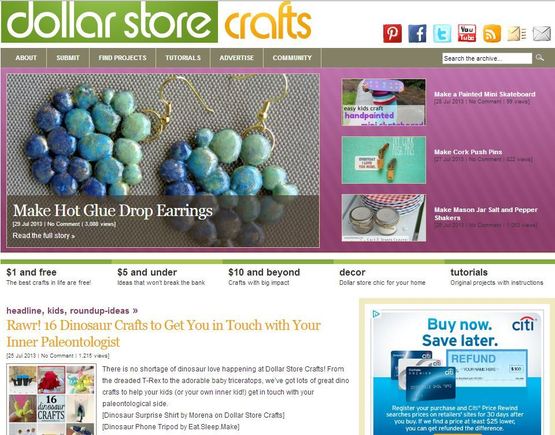Bloggers are often the most sought-after affiliates in the affiliate marketing industry. This is because bloggers have unique content and targeted, loyal audiences, which drives solid conversion rates and new customers. According to statistics compiled by BlogHer, a publishing network of female bloggers, 87 percent of consumers have made a purchase based on a recommendation from a blog.
The challenges involved in working with bloggers are identifying which bloggers to recruit, how to invite them into your affiliate program, and how to structure payment. I will address each of these challenges below.
Identifying Bloggers to Recruit As Affiliates
Finding blogs with a relevant target demographic is simple. First, determine the target audience you want to go after. Be specific. Conducting a search for blogs that target, say, “women” will yield an unwieldy number. But search for blogs that target, for example, “moms who sew” will yield an actionable list of recruits. To do the search, you can simply use Google. There are also paid tools such as Linkdex and AffiliateRecruitment.com. The benefit of paid tools is that they will provide some sort of reach and engagement metric that quickly enables you to prioritize your recruiting activities.
If you search on Google to identify potential recruits, evaluate each of the results individually. Here are the evaluation criteria I use when determining whether to recruit a blogger into an affiliate program.
- Frequency of posts. How often are new posts added to the site? Ideally, you will see about three to four posts every week.
- Date of most recent post. The most recent post should be within the past few days.
- Relevance of blog. Check the content to ensure that the blog is relevant to your needs. For example, if you search “crafting supplies” to find blogs that focus on beading or painting, your search may also return blogs related to wood crafting, or watercraft.
- Audience engagement. Do posts receive multiple comments? Are there social sharing tools in place? How many times has the article been shared to Pinterest, Facebook, and Twitter?
Here is an example of a blog that successfully exhibits all four of these criteria:

Dollar Store Crafts is an attractive potential affiliate because it posts frequently, is highly targeted, and has an engaged audience.
For a specific search, I’ll usually start off with about 100 results. Then I’ll narrow those results down to 30 or 40 bloggers to target.
Inviting Bloggers into Your Affiliate Program
Traditional affiliates create sites to earn revenue. On the other hand, bloggers typically create blogs to communicate about a specific topic. The intent is entirely different, which means your recruiting approach will vary.
As with other content providers, bloggers are concerned with protecting their editorial integrity. They may be offended if you offer to trade product or cash in exchange for a post. They will be more responsive if you offer a product for review consideration, understanding that the blogger is under no requirement to complete a review.
However, many bloggers do conduct sponsored giveaways. If you sponsor one of these giveaways, you provide a product for bloggers to give out to their readers. The blogger may or may not write a post about you or your product. I have not seen many conversions as a direct result of these giveaways. But I have noticed that participation helps build trust and grow the relationship with the blogger, which has led to increased sales in the long run.
It should not be difficult to find contact information for a blogger. Bloggers are naturally social, and with a little research, you should be able to find an email address, contact form, or even Twitter handle. I typically reach out via email initially, and I include all my direct contact information in my signature.
Structuring Payment
When you invite a blogger into your affiliate program, emphasize that you use an affiliate network for tracking purposes. Many bloggers are wary of working on a revenue share basis, and ignore in-house affiliate managers — not affiliate networks.
Bloggers are more likely to respond to paid placement opportunities. When reaching out, emphasize that you are looking for a marketing partnership, not necessarily an affiliate relationship. As an affiliate manager, you could customize payment structures, combing paid placement with a revenue share model.
Paid placement fees typically range from $20 for inclusion in a giveaway to $500 for a sidebar ad. When I contact bloggers, I ask for a media kit. Based on the paid placement opportunities, I try to negotiate a short-term paid placement that includes revenue share. Even if revenue share is not included, I will track resulting traffic and sales though the affiliate network. Based on these numbers, I can then approach the blogger with a revised payment structure that ensures a positive return for my client.



